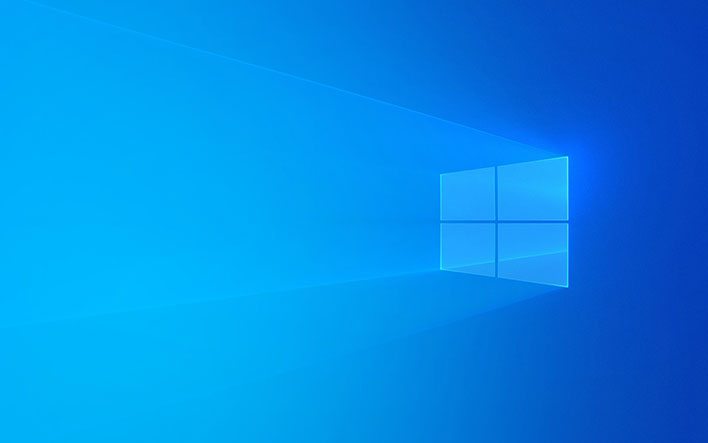Windows 10 20H1: Here's What Is Coming In Microsoft's Next Major OS Update

Microsoft has committed to rolling out two major feature upgrades to Windows 10 every year. However, it is looking as though the upcoming 19H1 release later this year will be more akin to a Service Pack upgrade from the days of old, whereas the 20H1 release next year will be more substantial. With that in mind, here is what we know about Windows 10 20H1.
First, the release—as the codename implies, it will land on PCs during the first half of next year. Exactly when remains to be seen, though as a point of reference, the first major upgrade of 2019 was the May 2019 Update, which rolled out in...you guessed it, May! Here is how things have shaken out so far (and going forward)...
- Windows 10 (Threshold 1) version 1507: July 29, 2015
- Windows 10 (Threshold 2) version 1511—November Update: November 10, 2015
- Windows 10 (Redstone 1) version 1607—Anniversary Update: August 2, 2016
- Windows 10 (Redstone 2) version 1703—Creators Update: April 5, 2017
- Windows 10 (Redstone 3) version 1709—Fall Creators Update: October 17, 2017
- Windows 10 (Redstone 4) version 1803—April 2018 Update: April 30, 2018
- Windows 10 (Redstone 5) version 1809—October 2018 Update: November 13, 2018
- Windows 10 (19H1) version 1903—May 2019 Update: May 21, 2019
- Windows 10 (19H2) version ????: Late 2019
- Windows 10 (20H1) version ????: Early 2020
Windows 10 has improved with each new feature update, albeit with growing pains (the October 2018 Update was especially painful for some users in the beginning). 19H2 is expected to be relatively minor in the grand scheme of things, with 20H1 bringing more interesting additions to the equation.
Say Hello To Linux

One of the upcoming features that has found its way into the Windows Insider program is a full Linux kernel. That's right, Microsoft is embracing Linux in Windows to a greater extent than it has ever done so before. The key change is a new Windows Subsystem for Linux (WSL), the most recent version of which is a full Linux kernel, based on version 4.19 of Linux.
"This new architecture, which uses a real Linux kernel, changes how these Linux binaries interact with Windows and your computer’s hardware, but still provides the same user experience as in WSL 1 (the current widely available version). WSL 2 delivers a much faster file system performance and full system call compatibility, which lets you run more applications like Docker!," Microsoft explained last month.
WSL 2 leverages Hyper-V features to operate in a virtual machine. It also requires users to place Linux files in the Linux root file system rather than on the designated C: drive, which in turn enables better performance when accessing those files.
Somewhat related to better Linux integration, Microsoft also recently began previewing a new Windows Terminal. It's like a souped up version of the Command Prompt, in a sense. It's actually available (in preview form) as a standalone download in the Microsoft Store to test, but will likely find its way into the 20H1 release. What it brings to the table is a handy tabbed interface that lets users seamless switch between the traditional Command Prompt, PowerShell, and various Linux terminals, all within a single window. Groovy.
Android And Eye Tracking

In a more recent test build, Microsoft introduced some Eye Control updates. Assuming they go the distance, 20H1 will allow users to combine click and drags with Shift and Control modifier keys. The launchpad can also be hidden by selecting the pause button, and reappears when the user briefly closes their eyes or looks away at the screen.
The same test build also brought allow along tweaks to Your Phone, bringing Notifications integration to a handful of additional Android phones, including several Galaxy devices, the OnePlus 6, and OnePlus 6T. What this feature does is allow users to mirror (or interact with) their Android phones directly from within Windows 10.
Say Goodbye To Logging In With Passwords (Sort Of)
One other thing Microsoft has recently been testing is the use of passwordless logins. Why? Because traditional passwords are both inconvenient and not all that secure, comparatively speaking.
"Enabling passwordless sign in will switch all Microsoft accounts on your Windows 10 device to modern authentication with Windows Hello Face, Fingerprint, or PIN. Don’t have Windows Hello set up yet? No problem! We’ll walk you through the setup experience on your next sign-in," Microsoft explained to Windows Insiders.
Microsoft's contention is that Windows Hello is simply more secure than using a password, for reasons outlined in the video embedded above.
Other Stuff
The next release is still way off in the distance, and there will undoubtedly be other features to emerge in the Windows Insider program. Generally speaking, however, 20H1 will deliver the usual round of bug fixes and performance improvements, as well as things like a more robust Task Manager, Accessibility improvements, and so forth.

